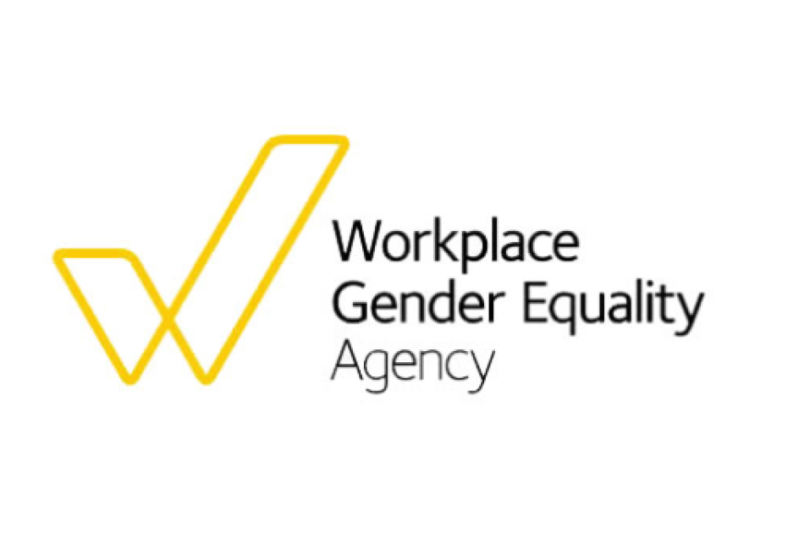
WGEA publishes new employer gender pay gaps
— 56% of employers improved their gender pay gap in the last 12 months —
— 79% of employers still have a gender pay gap outside the target range of +/-5% —
Just 1 in 5 (21%) Australian employers have an average gender pay gap in the target range of -5% and +5%, according to new results released today by the Workplace Gender Equality Agency (WGEA).
But progress to end the gender pay gap is happening.
The second publication of employer gender pay gaps provides new, more detailed insights into workplace gender equality for more than 5.3 million Australians.
This year WGEA has published the results for 7,800 individual employers and 1,700 corporate groups.
This expansion means that Australians working for a company that’s part of a bigger corporate group can access both the group and individual employer’s gender pay gap for the first time.
This enhances the understanding of women and men’s experience in Australian workplaces and provides employers with deeper insights to enable more targeted, evidence-informed action to address and correct differences.
WGEA has also published an analysis of the results in the Employer Gender Pay Gaps Report.
In the 2023-24 gender pay gap results, nearly 3 in 4 (72%) of all employers have a gender pay gap in favour of men. High-paying employers are the most likely to have a gender pay gap in favour of men and a larger gender pay gap.
WGEA will publish employer’s average gender pay gaps, as well as results for the median. These measures can provide important indications of the different drivers of an employer’s gender pay gap.
WGEA CEO Mary Wooldridge said it was encouraging that an analysis of both indicators shows that more than 1,100 employers (15%) are already in the target range of +/-5% for both measures.
“Each employer has a unique set of circumstances that impacts the size of their gender pay gap,” Ms Wooldridge said.
“Where an employer’s gender pay gap is beyond the target range of +/-5%, it indicates one gender is more likely to be over-represented in higher paying roles compared to the other. This can be a sign of structural or cultural differences for one gender within an occupation, organisation, or broader industry.
“For employers that haven’t made progress, it’s time to ask why – dig into the data to find out what’s causing any gender differences and use evidence-based solutions to address them.The new results, which use information reported by employers covering the time period immediately leading up to WGEA’s first release of gender pay gaps, suggests anticipation of publication generated positive flow on effects.”
WGEA’s analysis shows 56% of employers reduced their gender pay gap in the last year.
There was also a significant increase in employers conducting a gender pay gap analysis on their pay and composition to find out what’s driving their gaps and consultation with employees rose significantly.
“It’s promising to see the big increase in the number of employers working to understand what is driving their gender pay gap, beyond unequal pay,” Ms Wooldridge said.
“Over the past year, employers have told us that publication of employer gender pay gaps is a catalyst to assess gender-based differences in all areas of their workplace.
“For men, a more equal experience could mean their employer is providing access to paid parental leave, paying superannuation on that leave and actively supporting a flexible return to work from parental leave.
“For women, it could mean their employer is redesigning manager roles that will enable those roles to be undertaken on a part-time basis or as a job share. This action can create new pathways to career progression for employees with caring or other responsibilities outside of work, or by actively broadening the pipeline of talent across occupations and job roles.”
“What is common to each is purposeful action that breaks down traditional notions of what it means to be a worker and carer in the contemporary workplace.”
The gender pay gap is different to equal pay for equal or comparable work – which has been a legal requirement for employers since 1969.
Background
What’s been published?
Legislative changes that enabled the inclusion of CEO remuneration in calculations of an employer’s gender pay gap means WGEA has published average gender pay gaps and average remuneration by pay quartile, for the first time. This expands the information published last year, which included median gender pay gaps and gender composition by pay quartile.
The average gender pay gap is a good measure of the collective difference in the remuneration of a group. As the average is influenced by high and low salaries, it will show if earnings are particularly concentrated for one gender, for example, more men in higher earning positions.
The median is less influenced by high or low salaries. This means it gives a good picture of typical earnings that exist within an organisation.
Employer and corporate group gender pay gaps are published on WGEA’s website on the Data Explorer.
This includes links to the voluntary Employer Statement, in which each employer has the chance to articulate what they are doing to address inequalities based on gender in their organisation.
More information about what WGEA’s published, and how to interpret the results is on WGEA’s website at www.wgea.gov.au/about/our-legislation/publishing-employer-gender-pay-gaps.
WGEA’s Employer Gender Pay Gaps Report
The results are published in conjunction with WGEA’s Employer Gender Pay Gaps Report.
This Report provides an analysis of the aggregate results to help readers assess an employer’s gender
gap. It also has information on commonalities that increase the likelihood of larger gender pay gaps
– both in favour of men, and in favour or women – to spark a conversation about effective action.
The Report finds the over-representation of men in the upper quartile of earners is a significant factor,
driving up to two-thirds of employer gender pay gaps.






